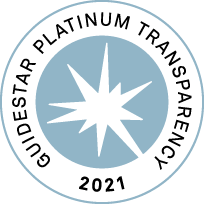Common Questions
Most frequent questions and answers
CHAMP1-Short for Chromosome Alignment- Maintaining Phosphoprotein. CHAMP1 an ultra rare genetic disease discovered in 2015. It is located on chromosome 13 and is said to be crucial in cell division called mitosis. The mutation of the CHAMP1 gene is refered to as Haploinsufficiency, this means out of the 2 alleles the mutation causes a loss of function to one leaving those affected with a single functional copy. Patients with CHAMP1 have a reduction in the CHAMP1 protein below the 50% which is necessary for proper neurological Function and development.
CHAMP1 is most commonly a De novo mutation, meaning it is not inherited from the parents but completely new to the genome of the individual. There are also reported cases of missense mutations inheritably passed down. These patients express a milder phenotype.
Children with CHAMP1 have varying levels of functionality. The lack of protein is responsible for a multitude of symptoms. Given the limited sample size of patients they are often affected differently.
The most recurrent symptoms of significance include global developmental delay/Intellectual disability and severe speech delay/loss. Below is a list of other symptoms present in children with CHAMP1 but not all may be related to the mutation.
- Developmental delay
- Severe Speech delay/loss of speech
- Learning disabilities
- Autistic features or traits
- Feeding difficulties from birth
- Reflux
- Atypical Neurological behavior
- Abnormal MRI(white matter ,Microcephaly, Structural deformities )
- Hypotonia
- Epilepsy (seizures)
- Vision Issues ( intermidite , near/far sighted, nystimga, Stabismus)
- Incontinent
- repetitiveness
- Anxiety
- Sleep issues (Apnea, Wakes frequently. Disturbances
- Flat nose bridge
- Low set ears
- Small Stature
- CVS(Cyclical vomiting Syndrome)
- Dental issues ( small teeth, misaligned, Baby teeth stay in to long)
Currently there are over 100 patients diagnosed with a CHAMP1 mutation in the world. There are individuals with CHAMP1 in over 22 countries with boys and girls affected alike
As (WES) whole exome sequencing is becoming more available the number or patients is expected to increase dramatically. CHAMP1 experts estimate a patient size well over 500 people.
Currently there is no cure or significant treatment for CHAMP1 yet but early and personalized intervention is recommended and necessary to thrive. Traditional therapies have been shown to show some improvement over time.
Speech therapy (including assistive technology and picture models)
Physical therapy
Occupational therapy

